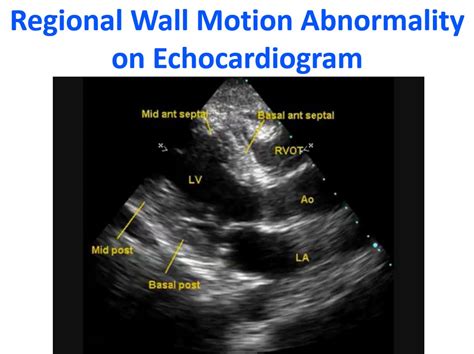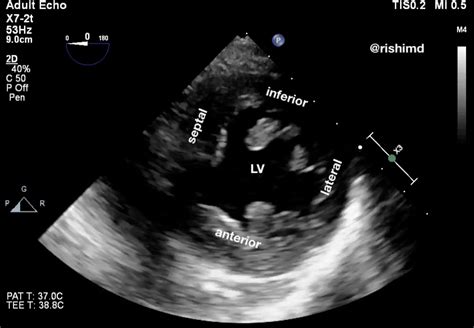lv wall motion | heart wall motion abnormalities lv wall motion Left ventricular wall motion abnormalities (LVWMAs) are commonly observed in a variety of medical conditions, including coronary artery disease, congestive heart failure, . Las Vegas, Nevada. I need a. Residential Electrician. Commercial Electrician. Providing Excellent Electrical Services. All Work Guaranteed & Honor Manufacturer Warranties. Do you have an electrical installation, repair, or wiring need that should be taken care of right away? Trust in Eco Electric to get the job done.
0 · wall motion abnormalities echo
1 · septal wall motion abnormality treatment
2 · lv wall motion abnormalities
3 · lv regional wall motion abnormality
4 · heart wall motion abnormalities
5 · echo regional wall motion abnormalities
6 · dyskinesia cardiac wall motion abnormalities
7 · cardiac wall motion abnormalities
Address. ZEGNA Boutique. Elizabetes, 51. Riga, +371 6750 4882. When and where. Mon-Fri 10.30-19.30. Sat 11.00-18.00. Sun 11.00-16.00. Today Open Until: 19:30. Directions. Newsletter. Join our newsletter to get exclusive contents, .
Left ventricular wall motion abnormalities (LVWMAs) are commonly observed in a variety of medical conditions, including coronary artery disease, congestive heart failure, .Wall motion is assessed in each segment of the left ventricle (Figure 1; refer to Segments of the Left Ventricle). Regional wall motion abnormalities are defined as regional abnormalities in contractile function. Ischemic heart disease is the most common cause of .
Left ventricular wall motion abnormalities (LVWMAs) are commonly observed in a variety of medical conditions, including coronary artery disease, congestive heart failure, stress-induced cardiomyopathy, myocarditis, chronic renal disease, and stroke. 1–4 Their underlying disease mechanisms and their potential causative role for stroke remain . Echocardiographic evaluation of wall motion (WM) is a simple, well-validated method to assess segmental left ventricular (LV) function. 1,2 The presence of qualitative WM abnormalities has been demonstrated to be an independent predictor of cardiovascular events in groups of patients with myocardial infarction (MI), 3,4 unstable angina, 5 .Wall motion patterns due to conduction delays (abnormal sequence of myocardial activation): o Septal bounce (“beaking”, “flash”) o Lateral apical motion during systole (“apical rocking”).
Left ventricular hypertrophy is a thickening of the wall of the heart's main pumping chamber, called the left ventricle. This thickening may increase pressure within the heart. The condition can make it harder for the heart to pump blood. Calculation of the left ventricular wall motion score index (WMSI) with transthoracic echocardiography allows the semi-quantification of left ventricular ejection fraction (LVEF).Three-dimensional echocardiography provides a volumetric measurement of global and regional left ventricular (LV) function. It avoids the subjectivity of 2D echocardiography in the assessment of regional wall motion abnormalities (RWMA).
Despite the similar improvement in endocardial border delineation, LVO settings allow the detection of more WMA than MCE at peak stress, leading to a significantly higher accuracy for the detection of ischaemia in patients suspected of coronary artery disease when only wall motion is taken into account. Background: Takotsubo cardiomyopathy (TC) can cause dynamic left ventricular outflow tract (LVOT) obstruction leading to cardiogenic shock. Due to differential wall-motion abnormalities, flow acceleration in the LVOT can lead to systolic anterior motion (SAM) of the mitral valve which worsens LVOT obstruction and leads to hemodynamic compromise. We .The presence of left ventricular (LV) wall motion abnormalities (WMA) is an independent indicator of adverse cardiovascular events in patients with cardiovascular diseases. We develop and evaluate the ability to detect cardiac wall motion .
Wall motion is assessed in each segment of the left ventricle (Figure 1; refer to Segments of the Left Ventricle). Regional wall motion abnormalities are defined as regional abnormalities in contractile function. Ischemic heart disease is the most common cause of .

wall motion abnormalities echo
Left ventricular wall motion abnormalities (LVWMAs) are commonly observed in a variety of medical conditions, including coronary artery disease, congestive heart failure, stress-induced cardiomyopathy, myocarditis, chronic renal disease, and stroke. 1–4 Their underlying disease mechanisms and their potential causative role for stroke remain . Echocardiographic evaluation of wall motion (WM) is a simple, well-validated method to assess segmental left ventricular (LV) function. 1,2 The presence of qualitative WM abnormalities has been demonstrated to be an independent predictor of cardiovascular events in groups of patients with myocardial infarction (MI), 3,4 unstable angina, 5 .Wall motion patterns due to conduction delays (abnormal sequence of myocardial activation): o Septal bounce (“beaking”, “flash”) o Lateral apical motion during systole (“apical rocking”). Left ventricular hypertrophy is a thickening of the wall of the heart's main pumping chamber, called the left ventricle. This thickening may increase pressure within the heart. The condition can make it harder for the heart to pump blood.
Calculation of the left ventricular wall motion score index (WMSI) with transthoracic echocardiography allows the semi-quantification of left ventricular ejection fraction (LVEF).Three-dimensional echocardiography provides a volumetric measurement of global and regional left ventricular (LV) function. It avoids the subjectivity of 2D echocardiography in the assessment of regional wall motion abnormalities (RWMA).
Despite the similar improvement in endocardial border delineation, LVO settings allow the detection of more WMA than MCE at peak stress, leading to a significantly higher accuracy for the detection of ischaemia in patients suspected of coronary artery disease when only wall motion is taken into account.
Background: Takotsubo cardiomyopathy (TC) can cause dynamic left ventricular outflow tract (LVOT) obstruction leading to cardiogenic shock. Due to differential wall-motion abnormalities, flow acceleration in the LVOT can lead to systolic anterior motion (SAM) of the mitral valve which worsens LVOT obstruction and leads to hemodynamic compromise. We .

septal wall motion abnormality treatment
Solve all the issue related to electricity and natural gas: submit meter readings, make payments, add new locations, update personal information, and follow your current consumption, compare it to.
lv wall motion|heart wall motion abnormalities



























